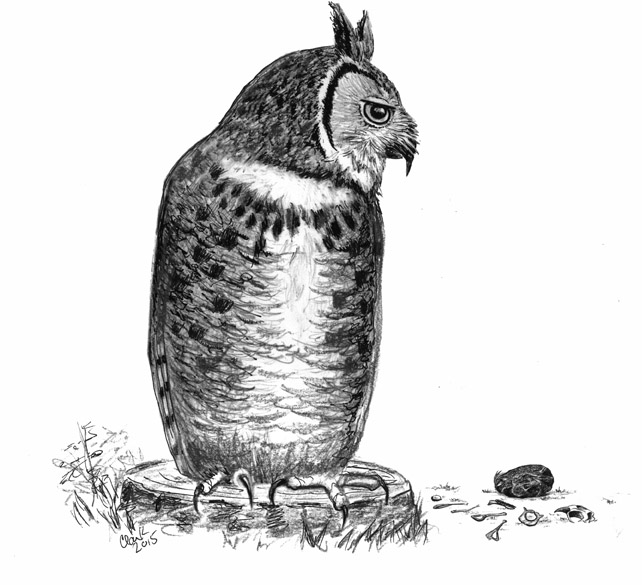
Dear Bird Folks,
I’ll be studying birds in school this year, so my aunt gave me an owl pellet kit for my birthday. In addition to owls, do pellets come from other birds as well?
– Alvin, Westborough, MA
Lucky you, Alvin,
You have a pretty cool aunt. When I was your age (actually, I don’t know how old you are, but it fits my answer better if I pretend like I do), my aunt gave me a pair of slippers for my birthday. Slippers? What kid wants or even wears slippers? Maybe Bud and Princess on TV’s Father Knows Best (ask your aunt, or your great aunt) wore them, but no real kid ever did. Come to think of it, most kids wouldn’t want an owl pellet either, but I would have loved one instead of boring old slippers. But then again, I used to play with road kill, so maybe it’s just me. Nah!
I probably should explain to everyone else that owl pellets are not something we feed to owls or (as one of my customers thought) items we plant in the ground to grow new owls. Owl pellets are actually something that owls spit up. (I know it’s gross, but at least it’s not road kill.) Like all birds, owls don’t have teeth and thus they can’t chew their food. Small birds, such as chickadees, use their beaks to break seeds into smaller pieces. But owls don’t want to waste their time dealing with little bits of food. Instead, owls swallow their prey whole, or in very large chunks. When a Great Horned Owl catches, say, a mouse, there is no skinning or plucking. The entire mouse goes down the hatch, whole and intact. As we all know, mice tend to be fat and juicy, but they also have a few less juicy parts such as teeth, bones, and fur (plus the squeak), which the owls can’t digest. These indigestible parts are eventually separated in the bird’s gizzard. (The gizzard has to be the best name for any body part ever. Don’t you wish we humans had gizzards instead of stupid teeth? Just think of all the money we would save on toothpaste, floss and braces. Of course, smiling for photos would be different but we’d figure something out.)
The fleshy pieces of the mouse pass through the gizzard and into the rest of the digestive system, which consists of the intestines and all of those other disgusting parts. But the fur, bones, etc. remain behind and are formed into a tight package. This is the pellet. With the pellet in the way the owls can’t eat again, so they spit it out, like a cat spits up a hairball. (Only in this case, the owl spits the pellet out in the woods, not on your new couch.)
While owl pellets might seem gross to some folks, researchers regularly collect and dissect them. Why do they do this? Like paleontologists reconstructing a dinosaur, scientists are able to tell us exactly what owls are eating based on the bones they find in the pellets. Examining pellets has given us information about the Great Horned Owls’ varied diet, which includes everything from birds to mammals to snakes. One researcher, who was tracking a radio-tagged screech owl through the woods, followed the transmitter’s signals to the base of a tree, where it was still working. However, the transmitter was no longer on the screech owl. It was encapsulated in a pellet that had been spit out by a much larger Great Horned Owl. (RIP, little screech owl.) Before you start to feel too sorry for the screech owl, keep in mind that these tiny owls are also predators and also produce pellets. Leg bands that once belonged to songbirds are regularly found in the pellets of screech owls. That’s just the way the system works.
As you suspected, owls aren’t the only birds that produce pellets. Kingfishers, for example, don’t eat furry mammals, but they eat plenty of fish, and fish have lots of bones (and scales). After a kingfisher eats a fish or two it will turn the bones (and scales) into a pellet and out it comes. Great Blue Herons, on the other hand, have super strong stomach acid and that allows them to digest the entire fish, bones, scales and all. But herons are equal opportunity predators and will grab anything that walks past them, including mammals such as mice and chipmunks. The herons’ stomach acid can’t digest the rodents’ fur, thus they must spit it out – owl style. Another fish-eating bird, the grebe, produces pellets of feathers. Where do the feathers come from? It is thought that the birds swallow their own feathers in order to protect their stomachs from sharp fish bones. These feathers eventually have to be spit back out. Even smaller birds, like flycatchers, have been known to cough up pellets made of bug “chitin.” Chitin is that hard exoskeleton that covers many insects. (Maybe you knew that already, Alvin, but I had to look it up. I’m not in school anymore, you know.)
While it might be fun to dissect an owl pellet, even I don’t want to go near what gulls spit up. Gulls’ pellets have been known to contain all kinds of debris including bones, shells, turtles, paper, glass, and in some urban areas, parts of cars…which the gulls later sell at pawnshops.
Here are two final words of caution to keep in mind. First, if you ever find your own owl pellet, it is suggested that you sterilize it in an oven (325 degrees for forty minutes) to kill any nasty bacteria. Also, I’ve seen lots of videos online showing herons attacking and eating live chipmunks. Keep that in mind the next time you see a heron. With a name like “Alvin,” you could be in trouble. (Once again, ask your aunt.)